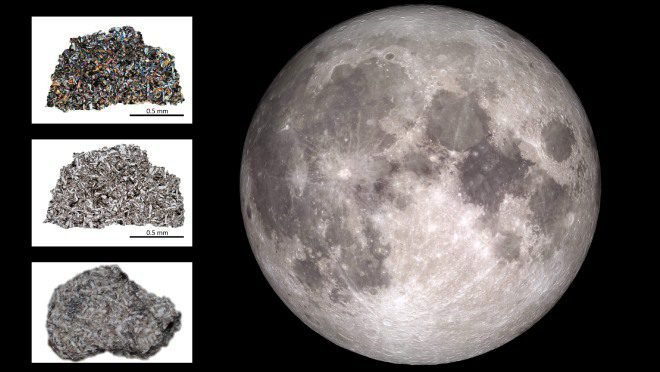The first concrete evidence that the moon inherited chemical elements from the interior of Earth was disclosed by a recent analysis of six lunar meteorites discovered in Antarctica. The finding lends credence to the huge impact idea, which holds that our planet’s longest-living companion was created when something enormous slammed into it in the past.
In six lunar meteorites from NASA’s Antarctic collection, Patrizia Will found traces of helium and neon, both noble gases that infrequently link to other elements, while conducting Ph.D. research at ETH Zurich in Switzerland.
The volcanic rock known as basalt that makes up meteorites developed when magma welled up from the moon’s interior and then quickly cooled. Lunar glass particles with chemical traces of solar gases were produced during the cooling process and were found inside the samples.
The glass was shielded from charged particles, including those from the sun’s solar wind and those from outside the solar system, known as cosmic rays, after the basalt was formed by successive layers of rock.
The researchers reasoned that the isolation preserved this fingerprint and assured the source of the gases trapped inside. A highly sensitive noble gas mass spectrometer, dubbed Tom Dooley after a Grateful Dead song, enabled scientists to detect the signatures of helium and neon in the meteorites.

The discovery supports the theory that the moon was formed by a massive impact, and the findings may provide a framework for future investigations into how the solar system’s rocky planets evolved. Theia, a protoplanet, is said to have collided with Earth roughly 4.5 billion years ago, or about 60 million years after the Earth’s formation, according to one variant of the massive impact idea.
The collision must have been quite powerful to release ejecta from the interior of Earth that could stay in orbit and form another body rather than falling back to our young planet.
The lightweight nature of the moon and the absence of significant amounts of iron in its interior, in contrast to the 30% or so of Earth’s mass that is contained within its iron-rich core, are other lines of evidence that lend credence to this theory. In addition to sharing a comparable composition with Earth’s mantle rocks, the moon’s mantle rocks also differ greatly from Martian meteorites.




